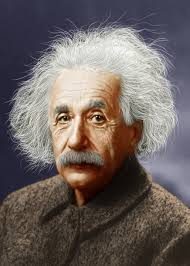“The frail child in the tattered dress stands next to a large carved wooden chair, her hand resting on the arm for support. A large gash runs from her forehead to her cheek; her arms and legs are evidence of repeated and severe abuse.”1 It’s easy to assume that this came straight from the script of a horror movie, but it was the harsh reality for young Mary Ellen Wilson, a nine year old girl who was so beaten up and malnourished that she only looked about half her age. Although the worst part about it was that her guardian, the person that was expected to provide love and care, was the perpetrator of this little girl’s tortured condition, and law enforcement was only able to help with one hand tied behind its back. Help for children like Mary Ellen was hard to come by because, in the year 1874, parents could raise and discipline their children as they pleased. Parents of the time lived with the mindset that the government had no right to interfere with their parenting, but the Mary Ellen Wilson case opened the eyes of many, including Henry Burgh, who initiated a change and put together a team to end the violence.2
Before 1874, no one had actually ever seen young Mary Ellen. She lived in isolation for at least six out of the nine years of her lifetime. Luckily, her suffering was brought to light when neighbors reported the crying of a child without ever actually seeing the child. Due to the lack of child protection laws, there was not much officials could do about the situation. But once missionary Etta Wheeler caught wind of what was going on, she was determined to rescue Mary Ellen. Etta Wheeler is often overlooked when the Mary Ellen Wilson story is told, but without her kind efforts, Mary Ellen may have never gotten the help she needed.3
Wheeler paid many visits to Mary Ellen’s home, most of which were unsuccessful. and she was only able to catch short glimpses of the battered child. She then requested help from local organizations and charities that were known for providing essentials for children in need, but they did not possess the authority to intervene. Finally, Wheeler turned to someone who was known to take action for causes that he believed in, Henry Burgh.4
Henry Burgh was a rich, well-known diplomat famous for being the founder of the American Society for the Prevention of Cruelty to Animals and for getting overwhelmingly involving in things that he believed in. After working with Wheeler to learn more about Mary Ellen’s situation, he reached out to attorney Elbridge T. Gerry. Gerry was eager to get the ball rolling as well, and within 48 hours, Gerry and Burgh had developed a case and asked Wheeler to testify.5 In attempts to gather more information of his own, Burgh sent investigators to Mary Ellen’s home. After seeing the horrific conditions that Mary Ellen was in, law enforcement soon made the decision to remove the young girl from the dangerous home. Although there were no specific laws concerning child abuse, these circumstances were so special and concerning that an executive decision was made. They took the young, battered girl out of her death trap of a home and comforted her in a blanket. She was so oblivious to the outside world that when a police officer gave her a peppermint stick for comfort, she tried to use it for self defense.6

It was now time for Mary Ellen’s case to go to court, and who better to tell the Mary Ellen story than Mary Ellen herself? She was able to testify for herself in cour,t and gave the real and terribly sad testimony that follows: “My name is Mary Ellen…I have no recollection of ever having been kissed and I have never been kissed by momma. I have never been taken on mommas lap…I never dared speak to anybody, because if I did I would get whipped; I have never had any more clothing than I have on at present…;I have seen stockings and other clothes in our room, but I am not allowed to put them on; whenever momma went out, I was locked up in the bed- room;…I don’t know for what I was whipped; momma never said anything when she whipped me; I do not want to go back to live with momma because she beats me so.”7
After a legal battle, Mary Ellen was permanently removed from her home and given her justice, but this was not enough for Henry Burgh. Burgh was determined to create an organization to protect future children from that kind of abuse. He quickly founded The New York Society for the Prevention of Cruelty to Children (NYSPCC). NYSPCC was the first child protective organization in the entire world. It has since influenced over 300 different organizations and eventually it led to the development of Child Protective Services.8
- Mary Renck Jalongo, “The Story of Mary Ellen Wilson: Tracing the Origins of Child Protection in America,” Early Childhood Education Journal, Vol. 34, no.1 (August 2006): 1. ↵
- Howard Markel, “Case Shined First Light on Child Abuse,” New York Times, December 14, 2009, http://www.nytimes.com/2009/12/15/health/15abus.html. ↵
- Gerald Mallon, “From the Editor: The Legend of Mary Ellen Wilson and Etta Wheeler: Child Maltreatment and Protection Today,” Child Welfare vol. 92, no.2 (March 2013): 9. ↵
- John E.B. Myers, “A Short History of Child Protection in America,” Family Law Quarterly, Volume 42, no.3 (Fall 2008): 451. ↵
- Mary Renck Jalongo, “The Story of Mary Ellen Wilson: Tracing the Origins of Child Protection in America,” Early Childhood Education Journal, Vol. 34, no.1 (August 2006): 2. ↵
- Eric Shelman, The Mary Ellen Wilson Child Abuse Case and the Beginning of Children’s Rights in 19th Century America (Jefferson, N.C. : McFarland & Company, 2005), 16. ↵
- Mary Renck Jalongo, “The Story of Mary Ellen Wilson: Tracing the Origins of Child Protection in America,” Early Childhood Education Journal, Vol. 34, no.1 (August 2006): 1. ↵
- John E.B. Myers, “A Short History of Child Protection in America,” Family Law Quarterly, Volume 42, no.3 (Fall 2008): 451-452. ↵



57 comments
Timothy ODekirk
This article was extremely interesting to me. Before reading this article, I was aware of the abuse that children had during the late 1800s. Child labor was a huge issue during this time, and something needed to be done to put child abuse yo an end. Unfortunately, in order for that to happen, an extremely outrageous abuse incident had to of occur ed. This incident was none other than the child abuse case of Marry Ellen Wilson. The abuse case of Marry Ellen Wilson was rather difficult to read. However, it is satisfying to know that there was a light at the end of the tunnel to this sad incident, and that there was something done to prevent future cases like this from occurring.
Kimberly Simmons
Looking at the picture of Mary and reading of what she endured brought pain to my heart. No child should have to grow up in the shadow of abuse. However, It’s people like Wheeler and Burgh who are the true saviors; the ones who see an issue and seek to find justice. A very unfortunate story with a happy ending for the victim. I hope she lived the rest of her life in complete happiness.
Michael Thomas
I found this article depressing because of how the children were treated in the late 1800s. If it was not for Etta Wheeler noticing the condition Mary Ellen was living under, children would still be enduring the same treatment from that time today. Today, we still see news reports of recent child abuse and parents being taken into custody. Overall, this article was good.
Destiny Leonard
This was such a heart breaking article to read, it is so unfortunate to think of all the children who were beaten and abused by the people who were supposed to love them most in this world. thankfully Mary Ellen was rescued from her abuse however it is so sad to think of all the people who were put through abuse without any rescue or aid. Although her story is sad at least that through her story programs meant to help people through this abuse have began to aid children and get them out of these types of situations.
Alyssa Childs
Most would believe that nobody has a heart, then and now, but thankfully we have people like Henry Burgh. This beautiful little girl, Mary Ellen Wilson, should have been given her justice a long time ago. Yes parents should raiser their children how they want to but they definitely can not mistreat kids in this way. Who would even have the mind to hurt a innocent child? People are outrageous and often have no heart. If she didn’t want this little girl then she should’ve not had the girl. I am happy read that this story had a somewhat happy ending.
Christopher Sanchez
It was heartbreaking to hear kids being abused by their own parents. I thought people in the past didn’t care about child abuse as much as today but it’s good to see there is. Without Etta Wheeler concerns about Mary Ellen I don’t NYSPCC wouldn’t existed. It’s amazing that Henry Burgh went as far as to start the NYSPCC in 1875. I pray that kids shouldn’t go through what Mary Ellen had to go through.
Monica Avila
This article is truly heartbreaking, this young girl did not deserve any amount of torture that she received. The fact that she never felt affection nor was given permission to wear certain amounts of clothes in heart wrenching. The aid of Etta Wheeler saved this poor girl, and God forbid what could have happened to Mary Ellen if she had not been rescued. So many children are abused and battered with no voice of their own to seek out help.
Anthony Robledo
Wow this is a great article. I had no idea who this girl was or even what her story was about. It is a sad story, but started the children protection agencies we see today. I still think more work needs to be done though. Even today most people see those agencies in a negative way. The government needs to be stricter with whom these children get placed with. The safety of children should always come first. Keep up the good work.
Jose Figueroa
Mary Ellen, was a name that I had not heard of prior to reading this article. I was shocked to know that there never were any child protection laws in place before 1874. Thankfully Etta Wheeler was able to get poor Mary out of that situation with a little help from Henry Burgh. He was able to get the resources to get her out of that home and prevent many other kids from being in a similar situation thanks to the creation of the NYSPCC.
Johnanthony Hernandez
We hear more and more in the news about children being locked up and beaten by their parents. More recently the thirteen kids and young adults that had been kept locked up by their parents in California, but rarely hear about children in situations like Mary Ellen was before 1940’s. It’s sad to think that a nine-year-old had to endure so much in her young life but must have been a relief when she was finally rescued from the torment of her mother. With her rescuers being those who began the ASPCA, founding the NYSPCC so that children like Mary Ellen would have a voice from then on.